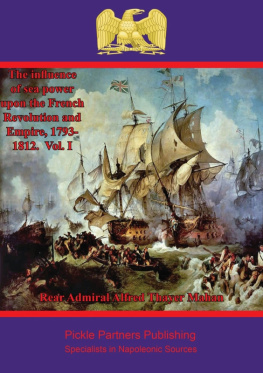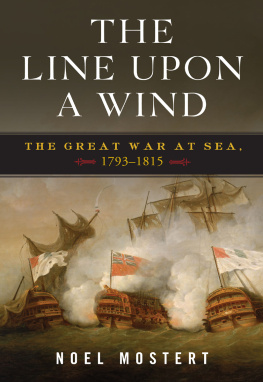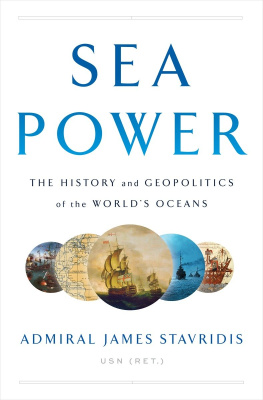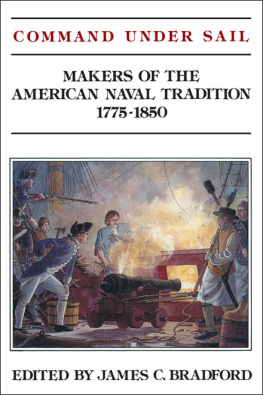Broadsides
Other Books by Nathan Miller
Star-Spangled Men: Americas Ten Worst Presidents
War at Sea: A Naval History of World War II
Theodore Roosevelt: A Life
Stealing from America: Corruption in American Politics from Jamestown to Whitewater
The U.S. Navy: A History
Spying for America: The Hidden History of American Intelligence
F. D. R.: An Intimate History
The Naval Air War: 19391945
The Roosevelt Chronicles
The U.S. Navy: An Illustrated History
The Founding Finalgers: A History of Corruption in American Politics
Sea of Glory: A Naval History of the American Revolution
The Belarus Secret (with John Loftus)
Broadsides
The Age of Fighting Sail, 17751815
NATHAN MILLER

John Wiley & Sons, Inc.
New York Chichester Weinheim Brisbane Singapore Toronto
Copyright 2000 by Nathan Miller. All rights reserved
Published by John Wiley & Sons, Inc.
Published simultaneously in Canada
No part of this publication may be reproduced, stored in a retrieval system, or transmitted in any form or by any means, electronic, mechanical, photocopying, recording, scanning, or otherwise, except as permitted under Section 107 or 108 of the 1976 United States Copyright Act, without either the prior written permission of the Publisher, or authorization through payment of the appropriate per-copy fee to the Copyright Clearance Center, 222 Rosewood Drive, Danvers, MA 01923, (978) 750-8400, fax (978) 750-4744. Requests to the Publisher for permission should be addressed to the Permissions Department, John Wiley & Sons, Inc., 605 Third Avenue, New York, NY 10158-0012, (212) 850-6011, fax (212) 850-6008, e-mail: PERMREQ@WILEY.COM.
This publication is designed to provide accurate and authoritative information in regard to the subject matter covered. It is sold with the understanding that the publisher is not engaged in rendering professional services. If professional advice or other expert assistance is required, the services of a competent professional person should be sought.
Library of Congress Cataloging-in-Publication Data:
Miller, Nathan
Broadsides : the age of fighting sail, 17751815 / Nathan Miller.
p. cm.
Includes bibliographical references and index.
ISBN 978-0-471-07835-7
1. Naval history, Modern18th century. 2. Naval history, Modern19th century.
I. Title.
D215.M55 2000
To
Cassie and Pat Furgurson
For Reasons
Known to Us All
He that commands the sea is at great liberty, and may take as much and as little of the war as he will.
Francis Bacon
Contents
Chapter 1
Attack, Take, or Destroy
Chapter 2
Uncombined Operations
Chapter 3
Revolution Becomes World War
Chapter 4
Sea FightsClassic Style
Chapter 5
The World Turned Upside Down
Chapter 6
Sea FightNew Style
Chapter 7
Heart of Oak
Chapter 8
To Glory We Steer
Chapter 9
Engage the Enemy Closer
Chapter 10
Nelsons Patent Bridge
Chapter 11
A Breeze at Spithead
Chapter 12
Proud New Frigates
Chapter 13
A Band of Brothers
Chapter 14
Naples Is a Dangerous Place
Chapter 15
Of Nelson and the North
Chapter 16
To the Shores of Tripoli
Chapter 17
He Will Not Come by Water
Chapter 18
The Long Watch
Chapter 19
England Expects
Chapter 20
The Beautiful Precision of Our Fire
Chapter 21
Free Trade and Sailors Rights
Chapter 22
Tattered Ensigns
Appendix I
The Composition of the Royal Navy, 17931816
Appendix II
Nelsons Trafalgar Memorandum
Preface
FEW ERAS OF the past hold more fascination for us than the Age of Fighting Sail, as is clear from the popularity of the novels of Patrick OBrian, C. S. Forester, and Alexander Kent, among others. Yet, in spite of popular interest in the long-vanished world of wooden men-of-war and pigtailed sailors, there is no readily available history of this period for a general audience. Ever since I began reading the Hornblower novels more than a half century ago, I have looked for such an account without success. I hope this book will fill that gap. It is intended to provide the historical background to the fictional works that have such a devoted readership.
This is a work of imagination and historywith the imagination limited by history. Fortunately, despite the hazards of time there is no shortage of documentation about the era. Logbooks, official reports, letters, and memoirs have been preservedand they have served as the foundation of my book. Inasmuch as this book is intended for the general reader, I have not weighted it with an array of footnotes. But he or she is assured that each quotation or statement of fact is based on documentary evidence. I take full responsibility for the interpretations drawn from them.
My designation of the Age of Fighting Sail as the years between 1775 and 1815 is arbitrary. Usually it is given to the period beginning with the Anglo-Dutch Wars in 1650, when sea power became a dominant factor in geopolitics, and ending with the fall of Napoleon in 1815. But I have limited the period covered here to the final forty years, which most fascinate modern readersthe naval side of the American Revolution; the twenty-two-year struggle between Britain and Revolutionary and then Napoleonic France, which began in 1793; the organization of the U.S. Navy in 1797; the forgotten undeclared naval war between the United States and France; the American struggle against the Barbary pirates; and finally the useless War of 1812 between the British and the United States. One man, Horatio Nelson, epitomizes this era, and I have used his life as a framework for the narrative but have continued it on for the decade following his death at Trafalgar in 1805.
This book is not a mere account of disconnected battles or campaigns, however. I have tried to place the battles within the strategic, political, and social contexts of the time. The question might well be asked whether the era of sailing ships and muzzle-loading guns has anything to teach us in the age of the nuclear submarine and the cruise missile. The answer is yes. Tenacity, steadfastness, and resolution in adversityqualities that were valuable for a nation two centuries agoare just as important at the start of a new century. No ship sails alone. There is a unity between the past and the vessels of the present and futureand the men and women who sail in them.
As in all my naval books, full attention has been given to ordinary seamen who served in these ships and fought the battles. For the most part, they did not keep journals or write memoirs, and this book is intended to help keep their memory alive. Although they endured conditions that are savage by todays standards, the sailors of the Age of Fighting SailFrench, British, Dutch, Portuguese, Danish, Spanish, Russian, Swedish, and Americanusually went willingly into battle, shouting defiance and proud of their moment of glory.








